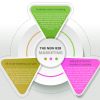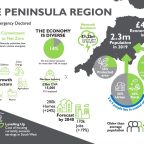
How to Remain One Step Ahead of the Latest Fashion Retail Trends
The clothing retail industry is one of the largest economic sectors within the United Kingdom. According to recent figures, total domestic sales between January 2016 and July 2018 exceeded 3.91 billion pounds (1). While a sizeable portion of this revenue can be attributed to high street franchises, smaller firms are now able to tap into previously unattainable levels of success. However, keeping abreast of the latest trends can be very challenging. Let us quickly look at two proven methods which might initially appear to represent opposite ends of the spectrum.
More Than In-House Insight Alone
The majority of generic online articles will provide equally generic recommendations such as reading the latest fashion magazines, attending clothing seminars and visiting any regional runway events. These are altogether obvious and while they are indeed valuable tools, we need to scratch the surface a bit deeper if we hope to encounter turnkey solutions.
The Internet is an inexhaustible resource and it should be used to its fullest capacity. For example, did you know that many high-end fashion designers will often research which keywords are prevalent during a specific season? As these phrases hint at what the public is interested in purchasing, they provide a clear "road map" in regards to future marketing practices. Google Analytics is a great package to employ, as these searches can be segmented based off of the time period, the location and even the device that was used to initiate the initial search. It only stands to reason that the very same tools can be utilised within a retail clothing website so that buyer preferences will be better understood. Sales campaigns can thereafter be tailored around the most popular products.
E-Commerce Platforms: The Other Side of the Fashion Coin
Many clothing retailers are hesitant in terms of analysing trending data. They might not possess the technical acumen or they could simply be too busy with day-to-day concerns. This is why those who wish to successfully sell clothes need to implement the best e-commerce platforms on the market. These cloud-based bundles offer much more than simply the ability to gauge revenue generation over a discrete period of time. They will also clearly illustrate which items proved to resonate most with the intended audience. Client engagement is likewise much more simplified. It is now possible for designers to receive valuable feedback and input from existing customers; critical in terms of creating future marketing campaigns. Finally, e-commerce platforms such as Shopify provide a centralised method to tackle challenging scenarios. Some of the standard tools which are offered include:
• Professionally-designed themes.
• Unlimited bandwidth.
• Ultra-fast servers.
• Numerous clothing-related applications.
• Malleable and intuitive website templates.
The retail clothing sector within the United Kingdom should perform well in the foreseeable future. The real question is whether or not smaller organisations can capitalise upon such momentum. This is a much more realistic feat to achieve when professional and intuitive e-commerce software is employed within a real-time scenario.
Sources:
1. https://www.statista.com/statistics/387753/retail-sales-volume-monthly-f...



















